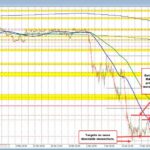
DHS Revokes TPS for Afghans and Cameroonians: What It Means for Thousands
Tháng 4 16, 2025
Mastering the USD/CHF: Your Guide to Volatility and Resistance Levels
Tháng 4 16, 2025Recent Updates on US Industrial Production: A Comprehensive Overview
March Industrial Production Decline
In March, the US industrial production experienced a notable decline of 0.3%, marking a downturn that was more severe than the anticipated 0.2% drop. This unexpected contraction in the manufacturing sector raises significant concerns among economists and industry leaders. To put this in perspective, industrial production had shown resilience in February, revising an earlier estimate from a 0.7% increase to a 0.8% rise, implying that the system was operating on a positive trajectory prior to March’s decline.
Implications of the Industrial Production Drop
The March downturn is particularly alarming as it suggests a potential slowdown in manufacturing activity, which is often considered a bellwether for the overall health of the economy. The manufacturing sector serves as a backbone for job creation and infrastructural development in the US, and any signs of contraction can signal broader economic challenges ahead. As we delve into the specifics, the implications for businesses operating in this space could be significant, forcing manufacturers to reassess production strategies and workforce requirements.
Factors Influencing the Decline
Several external influences are contributing to the recent decline in industrial production. One of the primary factors is trade uncertainty, particularly due to expedited tariffs introduced by former President Trump. These tariffs have sown seeds of hesitation among manufacturers, who find it increasingly difficult to plan for long-term investments in production capabilities. As manufacturers grapple with unclear trade policies, they may be inclined to adopt a more cautious approach, potentially stifling growth in crucial sectors such as industrial automation.
Another significant factor is the Manufacturing Purchasing Manager’s Index (PMI). The Institute for Supply Management reported that the PMI dipped below 50 in March, a threshold that indicates contraction within the manufacturing economy. Such a decline paints a concerning picture regarding business confidence in the near-term economic outlook, which could further exacerbate the downturn in industrial production. Moreover, understanding the ramifications of external trade influences is crucial; for instance, China’s recent strategic moves to reassure foreign investors demonstrate the importance of maintaining international business relations. Read more about Xi Jinping’s meeting with global CEOs here.
Looking Ahead: The Future of Industrial Production
The outlook for US industrial production remains uncertain as the complexities of trade policies and economic fluctuations unfold. Moving forward, it will be essential for stakeholders in the industrial sector to assess these evolving challenges and strategize accordingly. Addressing trade uncertainties could play a significant role in stabilizing industrial production in upcoming months. Enhanced clarity in trade policies and sustained investment could mitigate the adverse effects observed in recent months and pave the way for recovery. For those investors looking to avoid pitfalls in this environment, Barry Ritholtz’s insights on common investment mistakes serve as a valuable resource. Learn more about avoiding investment mistakes with his guidance.
In conclusion, while the industrial sector is currently facing hurdles, proactive measures and strategic adjustments could foster resilience. As industries navigate through these challenging waters, keeping abreast of economic indicators will be crucial for forecasting trends and implementing effective adaptations to sustain growth and stability in the US manufacturing landscape.
